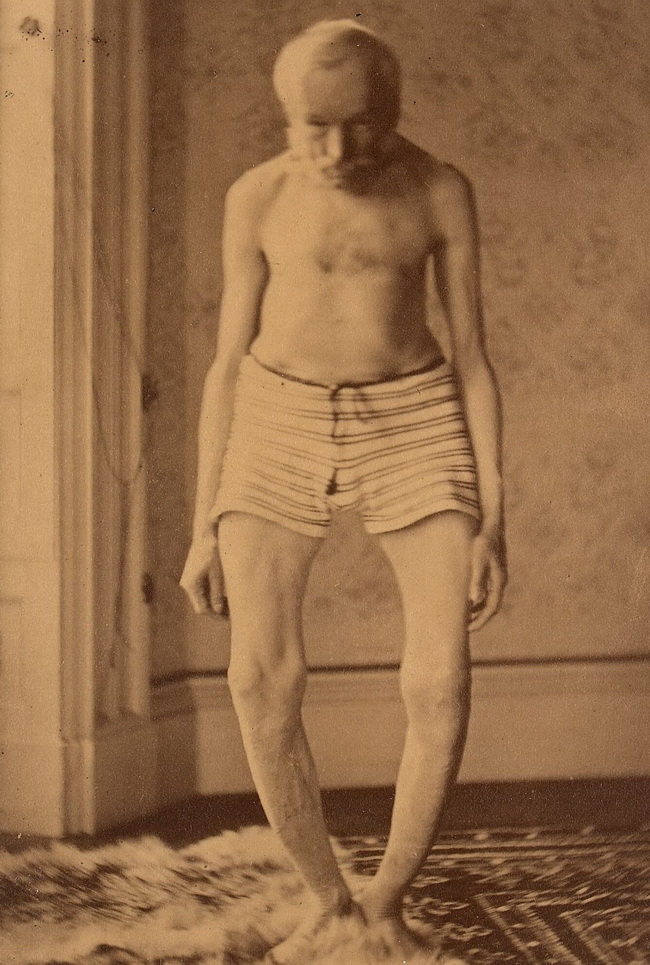Paget Disease of Bone : Clinical Features


Comments:
Clinical Features: Paget disease of bone (PDB) is often clinically silent until it has reached an advanced stage. It is frequently discovered incidentally on imaging studies or an investigation triggered by an isolated finding of elevated serum alkaline phosphatase level. Symptomatic patients present with bone pain in about 70% of cases. Overgrowth in long bones like femur and tibia can cause lengthening of the bone and bowing of legs (Sabre tibia, as shown here and in the next image). Deformity of femur or tibia can alter gait and put stress on joints and soft tissues causing secondary osteoarthritis. About 20% of patients have bone deformity at presentation. About 10-30% of PDB patients sustain pathologic fractures (fissure fractures) which may be incomplete initially, traversing the outer border of the cortex of bowed bones. Fractures usually occur in the weight bearing bones and are at increased risk of complete transverse fracture. clinical features continue in the next image Image Credit: Bowness, Moses, St. Bartholomew's Hospital Archives and Museum; used under Creative Commons Attribution (4.0) International (CC BY 4.0); accessed from The Wellcome Collection on 1/4/2022.



